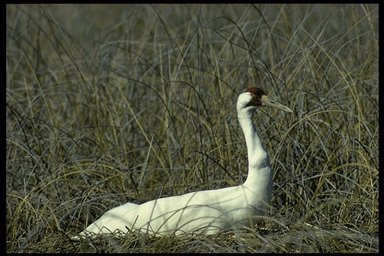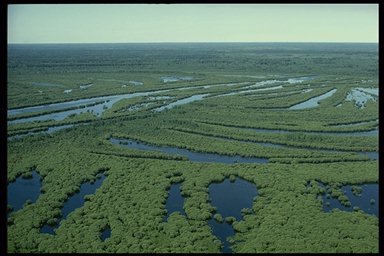
A vast wild plain spread with bogs, forests, meandering streams and spongy muskeg that has changed little since long before the days of the fur traders. Some of Canada's largest rivers and lakes are found in this region.

THE LAND:
What makes this region stand out is that nothing in it does - at least in terms of topography. Lowlands, plains and plateaux, underlain by horizontal beds of sedimentary rock, give this region its typical subdued relief.
What does make this region stand out are the two huge lakes, Great Bear and Great Slave, on its eastern edge and Canada's largest river, the Mackenzie. Major tributaries of the Mackenzie - the Liard, Peace, Slave - and a network of smaller rivers and streams shape the character of this region with broad floodplains crisscrossed with meandering channels and oxbow lakes.

VEGETATION:
Although this region covers a vast range of latitude, spruce prevails throughout. In its northern reaches, open spruce forests with an understory of grey-green lichens provide winter range for caribou. Milder sites support dense forests of spruce mixed with balsam poplar, birch and aspen. In poorly drained sites, forests of black spruce and tamarack prevail - their shallow root systems spread wide in the thin layer of soggy soil. Vast treeless areas cover large parts of the region.
WILDLIFE:
The wildlife of this region is remarkable for its impermanence. Vast numbers of migratory birds take advantage of the super-abundance of food - especially insects - in the brief summer. But the long, bitterly cold winters make this region a harsh environment for year-round residents. These include the muskrat, beaver, wolf, coyote, red fox, black and grizzly bear, lynx, moose, caribou and, of course, the bison.
THE STATUS OF NATIONAL PARKS :
Wood Buffalo National Park (44 802 km2) represents this region. Small portions of the park also extend into Natural Regions 12 and 17. A World Heritage Site and home to the world's largest bison herd and the only known nesting site of the whooping crane, this is Canada's largest national park; it is also one of the largest in the world. This vast wilderness of bogs, forests, meandering streams, huge silty rivers and great tracts of spongy muskeg has changed little since prehistoric times. The sprawling Peace-Athabasca Delta, one of the world's largest inland deltas and a Ramsar site (a wetland habitat of global significance), is encompassed by the park. It is also one of the world's most impressive wildlife areas. Huge flocks of geese, swans, ducks and other water birds funnel through here each spring on their northward migration. Millions stay to nest.

Between 1925 and 1928, almost 7,000 plains bison were transported from Wainwright in southern Alberta to the park. This decision, well-intended though it was, brought disease in the form of tuberculosis and brucellosis, and resulted in the hybridization of the wood bison herd in the park (a separate sub-species) with the plains bison.
Wood Buffalo National Park was established in 1922 by federal Order-in-Council under the Dominion Forest Reserves and Parks Act to preserve the habitat of the wood bison. It was expanded in 1926 to its present size. Since that time, local Aboriginal people have continued to hunt, trap and fish within the park, making this the park in Canada with the longest-standing tradition of Native subsistence use. With the settlement of the Cree Band of Fort Chipewyan Land Claim in 1986, formal mechanisms were set up for the Mikisew Cree to participate in management decisions within its traditional territory in the park.